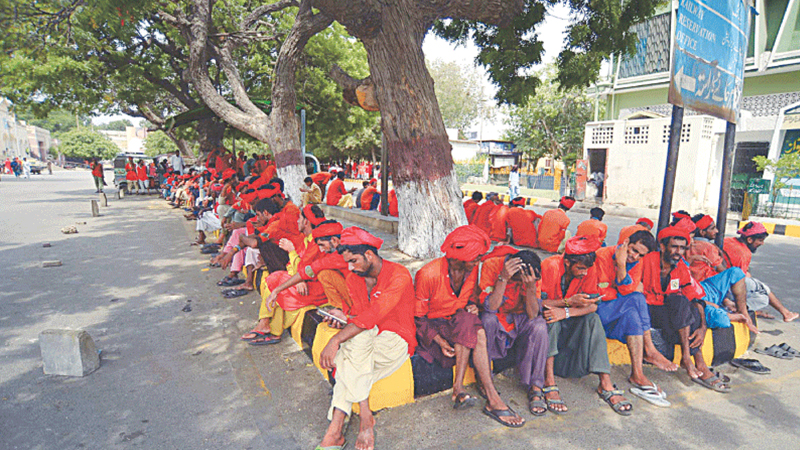The city of Karachi witnessed an unprecedented weather phenomenon on the night between Sunday and Monday, as the temperature soared to a record-breaking level. The Pakistan Meteorological Department (PMD) confirmed that the minimum temperature recorded on the night of July 1 was 32 degrees Celsius with 70 per cent relative humidity, marking it as the warmest night of July in over 60 years.
Chief Meteorologist Dr. Sardar Sarfaraz attributed the extreme conditions to the lingering effects of a low-pressure system over Indian Gujarat. “It’s the remnants of the low-pressure area still prevailing over the Indian Gujarat that influenced Karachi’s weather,” he explained.
This record-breaking night eclipsed the previous record set three to four years ago, where the minimum temperature was recorded at 31 degrees Celsius. Dr. Sarfaraz assured that with the restoration of the sea breeze, the city’s temperature is expected to drop, although the weather will remain hot and humid. He added that there are no forecasts for rain in Karachi at least until July 8.
On Monday, the maximum temperature peaked at 38.1 degrees Celsius, a significant 4.5 degrees above the July monthly average of 33.6 degrees Celsius, with a relative humidity of 60pc.
Impact of the heatwave
The recent heatwave, which gripped the city from June 23 to June 30, has been noted as the hottest period since the deadly 2015 heatwave that claimed over 1,200 lives. However, for the first time in eight days, no deaths from heatstroke were reported on Monday from the major hospitals in the city, including Jinnah Postgraduate Medical Centre (JPMC), Dr. Ruth Pfau Civil Hospital Karachi (CHK), Indus Hospital, and Abbasi Shaheed Hospital (ASH).
Despite the absence of fatalities, emergency departments across these hospitals still treated a number of heatstroke patients. Sources indicate that although no official figures are available, more than 60 patients are believed to have succumbed to heat-related illnesses at the four tertiary care hospitals or were brought in dead.
The actual number of heatstroke cases might be significantly higher, as rescue services and non-profit organisations reported a substantial increase in the number of bodies received at their morgues. Most victims were brought in by their families.
Health concerns and observations
According to Dawn, Dr. Imran Sarwar G. Sheikh, head of the emergency department at CHK, noted a different pattern in symptoms compared to the 2015 heatwave. “In 2015, most patients reported with diarrhea along with other complaints. This time, however, high fever was the most common complaint, followed by other signs and symptoms,” he observed.
Dr. Sheikh mentioned that patients presented with extremely high temperatures, ranging from 105°F to 106°F, a phenomenon not commonly seen before. He suggested that pre-existing viral fevers, such as dengue and chikungunya, which were already affecting the population, might have exacerbated the impact of the heatwave.
Co-morbidities have also been identified as a significant risk factor in heatwave-related mortalities. Dr. Sheikh recounted cases of young patients with underlying health issues who succumbed to the severe heat. “The youngest patient who died was an 18-year-old girl with epilepsy. She reported with high fever and died within two hours. Another case involved a 25-year-old woman with five children who was severely anemic,” he said.
